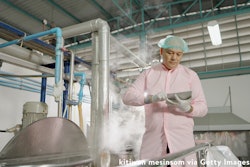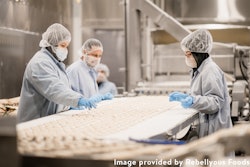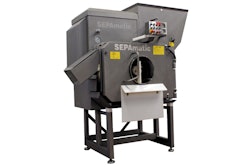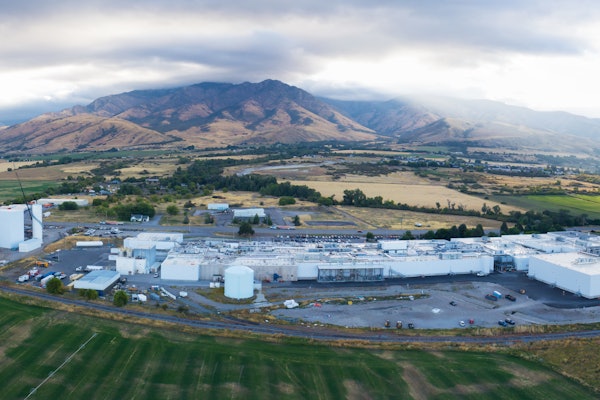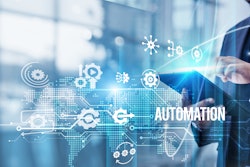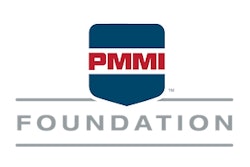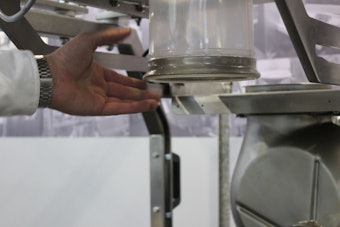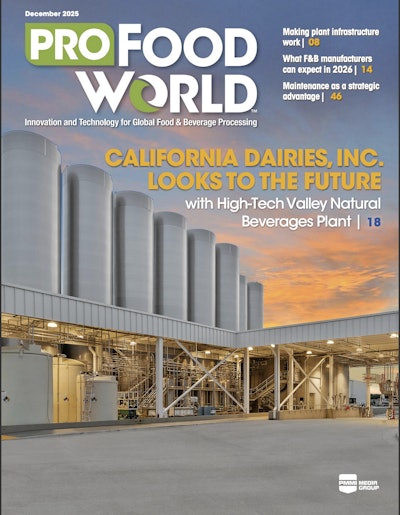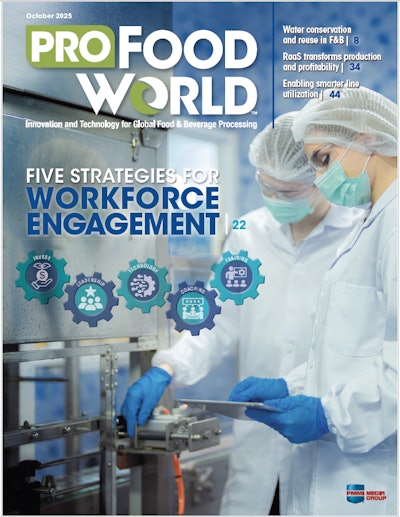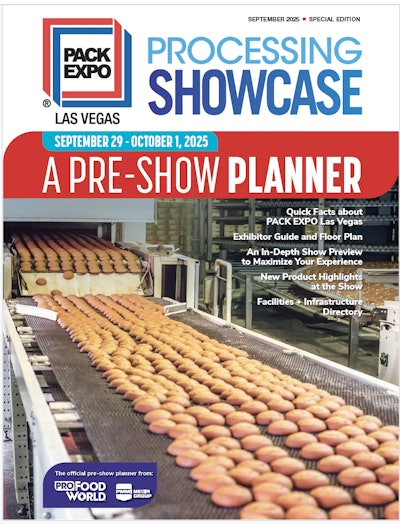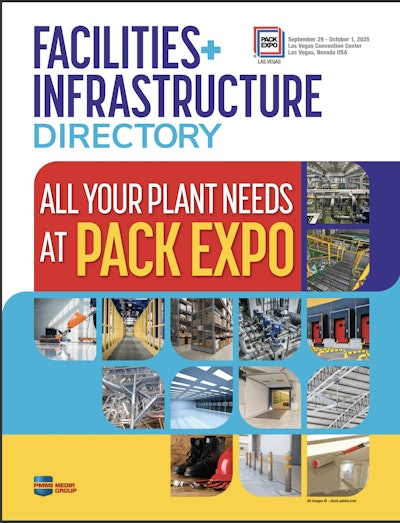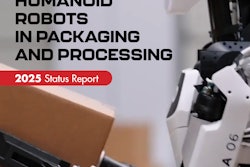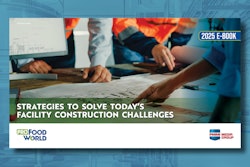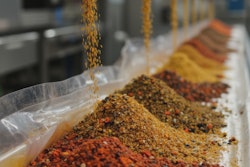Derrick Teal: Welcome to the ProFood World Video Interview series. I'm Editor in Chief Derrick Teal. This series explores the latest and greatest in food manufacturing by talking to industry leaders who know the ins and outs of what's important and what you need to know now in food processing operations. Whether you're here for some fresh insights or just curious about what's important for your operations, you're in the right place.
This episode is hosted by Bryan Griffen of Griffen Executive Solutions. Let's jump in.
Bryan Griffen: Thank you, Derrick, and welcome to the next episode of our ProFood World Video series, as Derrick said, I'm Bryan Griffen, 30-year industry veteran and your host. Today we're rolling out the red carpet for an insider's look at acceptance testing: the behind-the-scenes work that ensures every piece of equipment delivers a blockbuster performance.
Joining me is James Couch, a seasoned director in the world of manufacturing, here to give us a backstage pass to FATs, SATs, and everything in between. So, James spent 43 years in the CPG protein industry. He's worked in various roles including operations, plant maintenance and engineering, corporate engineering, environmental operations and regulations, EH and S, food safety, packaging systems design, packaging development, R&D, equipment engineering, and operational improvement. It's quite a list. His experience in the food industry companies extends to Smithfield Foods, Packerland Packing, Swift Independent, and John Morell and Company.
James retired from Smithfield, where he headed the Corporate Operations Improvement and Equipment Engineering group. He is now a partner and a coach with the FSO Institute, assisting companies in expanding and growing their internal resources and expanding their operational performance.
James currently resides in Wisconsin with his wife Patty of 47 years. So, James, thanks for joining us. That's quite an accomplishment, quite a career you've got there and an even bigger accomplishment in my eyes; 47 years of marriage. Well done.
James Couch: Well, thank you. And it's great to be here with you this morning.
And I always tell people when they look at that list of my functions over the 43 years is, I figure they couldn't figure out what I was good at, so they just kept moving me around.
Bryan Griffen: That's quite a few director activities that we've seen in our movies today. Every great movie starts with rehearsals. And in manufacturing, that's where FATs come in, or factory acceptance tests.
They're the dress rehearsals to make sure that the equipment is, is ready for its starring role on the plant floor. But why are traditional FATs such an essential part of the production process?
James Couch: Well, you know, I'll tell you, you're spot on. It's kind of like a rehearsal for script and a movie. You have to plan the work and then work the plan.
Bringing equipment into a facility, historically was always a challenge. You know, one of the key things we looked at was vertical startup. They were generally very difficult, cumbersome, people didn't understand the equipment.
From a food safety standpoint, it may have been the first time that the food safety manager or the quality assurance people had ever seen it. Same with our worker safety. So, there was just tremendous amount of challenges that we had pre-development of FATs.
Bryan Griffen: Okay. What's a classic rehearsal hiccup that you've encountered during an FAT and how do you make sure that it doesn't derail the whole show?
James Couch: You know, good question. Over my years of experience, we've certainly had numerous challenges with different types of OEM equipment. But specifically, it comes down to, a lot of it is related to generally minor things. Keep in mind, as you stated with a script, communication is key, and one of the key factors with your OEM.
I've always stated, as a factory or the end user, you can never over-communicate with the OEMs and your expectations of what you want to see out of the equipment. So, start early, communicate often, and generally things go well.
But you know, 90% of the time it's minor. Somebody will put in the wrong type of a connector. You know, we may have miscommunicated or not communicated correctly to the application and the wash down duty factors that were required. We'd see things like an IP65 when it needed to be an IP69. Or sharp edges on equipment, et cetera.
Generally, they're minor in nature today compared to what they were probably 20, 25 years ago in the industry. But it all comes to vertical startup. Like I said, communicate often and have a good plan, and bring that forth to the OEM at the very beginning of the RFP stage.
Bryan Griffen: I agree with you, that's absolutely key. I think the communications piece is something that we often forget, in my experience as well; we just expect that the OEM's going to know what we as the end user of the machine inherently want. And that's usually not the case, so keeping those lines of communication is absolutely vital, I agree.
We've all done FATs. But during the pandemic, we couldn't go onsite and visit these OEMs and look at the equipment like we traditionally did because everyone was in lockdown. So, the concept of a virtual FAT came up, which is like shooting the movie remotely. The director and the crew are in different locations, but we still have to get the scene shot.
How have these virtual FATs impacted the way manufacturers approach testing?
James Couch: You bring up a good point. With Smithfield at the time, you know, we were in a position where as that pandemic hit us across the country, we had numerous pieces of equipment out there, ready to ship or ready for FATs. So we literally were in a scramble mode. But we went back, we had great communication.
Thankfully a lot of our early ones within that pandemic era were around OEMs that we had a phenomenal relationship with, and previous equipment, so that helped. So we went to the basics. We said, “listen, let's just break out the cell phones, get the iPads, let's do it like this.” You know, we know what we're kind of looking for, we sent down a script of specifics.
To tell you that the first couple weren't a little cumbersome and quirky; they were. But it gave us a baseline. Then me and my team, we stepped back from that and we said, “this may be a good thing.” Because it forced us to look at an option and alternatives that we'd never considered before. It was always easy to get on a plane, fly the engineers to it, do our pre-FATs as we always did before we'd bring in the key operation people to the plant it was going to.
But this forced us to rethink the process. It was a challenge in the beginning, a tremendous learning curve. We had great partners with the OEMs. And then we all collectively looked at how could we make that process better. And that's where the new technology, streaming, videos, it all came into play.
Bryan Griffen: Sure. Speaking of that new technology, what are some of the best behind-the-camera tools, if you will, that have made the virtual FATs possible and effective as we go forward?
James Couch: A lot of that's the cameras. I mean, having multiple cameras that were actually recording at different angles as we were testing the equipment. It would capture things that even boots on the ground there, you didn't always see, because you're getting it from one viewpoint. You may or may not catch a hiccup or something that didn't look quite right.
But by having cameras, and we would have them from top to bottom, inside the equipment, places that you couldn't normally get to under traditional historical FAT processes.
And the streaming was so much better. We incorporated slow-motion videos, high-speed videos in the process. It gave us the ability, we could run a test that normally we'd spend historically, three to five days sometimes, on-site doing an FAT. Where with a virtual or even after the pandemic, as we continued on, we still utilize that, that virtual thing.
We used all the cameras and it would allow us to record things that morning or spend half a day, and then the other half a day at the OEM, we would spend that going back through the videotapes and reviewing that process. So it allowed us to pick up things, communicate with key people within the OEMs, the potential challenges or problems that we might observe within the process. Just phenomenal.
Bryan Griffen: Yeah, so it sounds like there actually was something good that came out of the pandemic, at least in the terms of factory acceptance tests.
So, once the cameras stop rolling, the real work begins on location, and that's where the SATs or site acceptance tests come in. We're no longer at the OEM; we're now in the factory where this equipment's going to run. And, and the SAT is like the opening night of a big performance. So how do these SATs, how do they complement FATs to ensure that the equipment delivers a blockbuster performance on the plant floor?
James Couch: Well, to the point, as we kind of look back and talk about an FAT, it's the rehearsal. So, we've got a script, we have our plan, we know what our expectations are. We've given great communication based on performance criteria that the equipment's got to meet. We've also recognized during that FAT, depending upon the equipment, not all of it can meet the same strenuous requirements that happens or that the equipment interacts with within a factory.
We would certainly do a certain amount of sanitation, wash down preps and stuff that in FATs if amenable; not all facilities have the ability to do that. But within the food industry and CPGs, we all have washdown. Generally, it's high pressure. They're all refrigerated spaces, so you've got a huge variation in temperatures. You're operating a room between 38 and 40 degrees during the daytime, and then you're hitting this thing with 160-to-180-degree water at night. So, you're putting it through its paces.
We go into this knowing these factors and challenges, and we try to give ourselves at least a good 12 hour period to stress that equipment as such during an FAT, but before we bring it online. Do we always get that opportunity? Not always. But we're prepared, and we've done the rehearsal.
We also, whether we're doing it virtually or we do it with boots on the ground, the old traditional FATs, we try to get as many of the core people that are going to interact with that equipment at the OEM early in that process.
Get the operator there, get the technicians, the maintenance people that will interact with the equipment there, food safety and worker safety staff, so they can touch and feel it. If not, we had protocols and procedures in place that allowed us to do that under virtual fats where the operators and the staff didn't see it ahead of time. They were given that opportunity pre-startup of that equipment, so they had the opportunity to interact with it, for some high-level training.
And then generally that first week is all about training. You're starting the machinery up; you're training the staff as you're moving through it. And most of them start up at a hundred percent. Our vertical startups were, the machine was expected to put out X number of widgets per hour, and that's what we set it up to run with.
Bryan Griffen: Okay. And that just shows the value of a good FAT, if you can get that vertical startup like that. But I'm sure there's been some opening night surprises, some things that happened in an SAT that you didn't anticipate from the FAT, where things maybe went a little smoother.
So, what's an example that you can share of one of these opening night surprises and, and how your crew handled it?
James Couch: Good point. Some of the things that always happen on opening day with the start of the equipment is, now you've actually got product coming to it.
You've got it coming at it at the pace that the line's feeding it, unlike what you may have experienced within a very small window during the FAT. And you end up with a jam-up or things don't transfer correctly. You're interacting with other integrated equipment, which you didn't have that opportunity to deal with during the FATs.
So, you're right. Do they happen? Absolutely. And they happen more times than they don't. But that's where you just, you know going in and you prepare and you assume the worst, and you plan for the best. You've just got a great team around it, you know, the OEM brings all the right people; they help in operating their equipment. You're dealing with some of the other stresses that may be causing some of the pain in the process, working with your in-house facility operators, maintenance staff are there.
We've had things that ran great at FATs, started on the plant and lost a component. Brand new piece of equipment. And I wish I could tell you how many times I had a floor supervisor or plant manager say, “how could we lose a motor? This thing's brand new.”
Of course, these things fail, you know? I wish I could predict all that, but they happen. So, you just go into it as prepared as possible and you deal with it.
We luckily never curtailed an operation. We slowed them down a few times and obviously had to experience a few downtimes with component failures to replace them. But it's not unlike a normal day in a production.
Bryan Griffen: Okay. Very good. Let's talk about a real blockbuster success story. Can you share with us a time when a company you worked with, a project you worked on used a virtual FAT to stay on schedule and hit their goals despite all of the challenges with the pandemic or with OEM issues or supply issues? Can you just share a success story with us on acceptance testing for our listeners?
James Couch: You know we actually had several. But some that we probably did quite a bit was with a lot of folding carton equipment. Some of that can be challenging, and historically, we never had the ability to get the operator or the technicians at the OEM prior to shipping that equipment into a plant.
Some of the value that we saw, obviously with the virtual FATs coming out of the pandemic, during, and then their post-effect, was the fact that we not only had operators looking at the equipment and interacting during the discussion and asking great questions. Things, from an engineer standpoint, you're thinking this is pretty simple, straightforward. But an operator is looking at it from a different perspective.
They just ask great questions that catch things. And sometimes they're extremely minor issues. Something simple like, “How do I read the HMI, and what's it telling me?” So, going through those attributes with the operators, and a lot of the startup challenges that you have with the technicians or maintenance staff, all those things we found brought tremendous value and our vertical startups improved. We started seeing better and better startups with minimal problems by doing that. So, it was really great.
Bryan Griffen: That's fantastic, that's a great use of, of a forced technology, if you will, based on the times, that looks like it's going to stay around for a while. Because the value of having those additional people participate where they traditionally weren't able to, it seems tremendous.
James Couch: And I would say, the ancillaries, it's the EH and S people, worker safety, food safety, you know, those are generally people that are, they want to come to FATs. But trying to get them there is difficult because of their work. And it's a cost. I don't mind telling you, a lot of our equipment was built overseas, so it required plane tickets. Not inexpensive plane tickets to get over to Europe and other countries. And if we pulled away post pandemic, it was a hybrid. We kind of went back to the traditional FAT, but we maintained the virtual FAT process.
So, we sent key people, generally the engineers, and they had a script, we had a plan, we knew what we were looking for. We incorporated general managers and we would set up a time slot. So, we'd say, “From nine o'clock to 11 o'clock, we want to have our food safety people engaged in the process of the video stream.” We would schedule everything.
Now, that didn't mean that… if somebody wanted to attend all day, they could. But we had a schedule established on worker safety, food safety, operators, technicians, maintenance staff. So, we had everybody involved in that. We opened it from a corporate perspective, so that our senior people at a corporate level could interact with it, as well as our local people where the equipment was being installed.
Bryan Griffen: That makes good sense. All right, before we wrap up, let's have a little fun with the quick-fire round. The quickfire round is short answers, fast-paced, first thing that pops into your mind, no thinking. So are you ready?
James Couch: I'm ready.
Bryan Griffen: Alright, so here we go. First question, what's the number one thing you'd put on the director's checklist for a successful FAT?
James Couch: To determine exactly what success looks like. And a lot of that's going to come straight from the plan. Obviously if we have a performance document that's drafter, but at the end of the day, it's all about acceptance at the facility and what do they call good.
Bryan Griffen: Okay. Very good. What's your favorite special effect or tool or technology that makes virtual FAT shine?
James Couch: I would say the slow-mo camera ability. I mean, we found that when we started incorporating that, we would pick up things that the human eye just can't see. You think you saw it, but you're not sure you saw it, so having slow-mo cameras that that enabled us to pull back and review that numerous times, certainly helped us a lot in the long term.
Bryan Griffen: Very good. And last one, what's one thing that's often overlooked during SATs but can make or break the final cut?
James Couch: I would say probably parts. Just make certain that you've got all the components, critical components and general consumables on hand at the time that you're doing your SAT in startup. Because it's new, but things fail. Things as simple as a sensor can take the entire startup down, and having the right components on hand at startup is critical.
Bryan Griffen: Very good. Well, thank you James for giving us such a great behind-the-scenes look at acceptance testing. It's been a fascinating conversation. I appreciate your time. And that's a wrap on today's episode of the ProFood World Video Series. Make sure to tune in for more behind the scenes insights and check out ProFood World online for additional resources.
Thanks for watching and I wish you good luck the next time it's lights, cameras, action for you on your acceptance testing.

